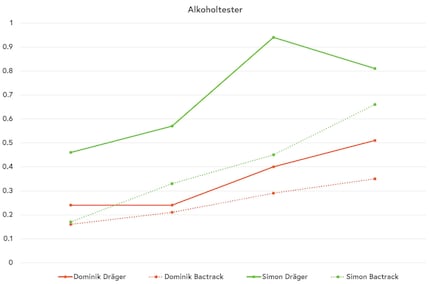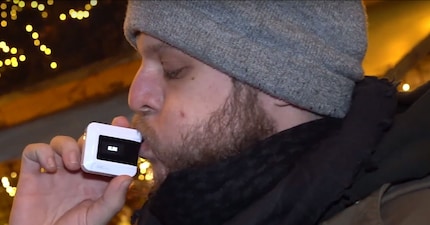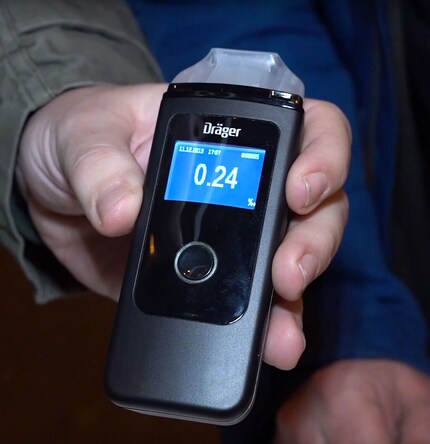
Breathalyser tested
The phrase "No thanks, I still have to drive" is part of the vocabulary of conscientious, car-driving people. But you never really know whether you've actually had too much after Christmas dinner. We have therefore tried out three breathalysers.
Scientific experiments need to be well prepared. I need a group of test subjects for this test, consisting of myself and my colleague Dominik Bärlocher. So that we can fully indulge in the scientific booze, I have engaged my colleague Carolin Teufelberger as a research assistant. She ensures that all the data is collected correctly (and should have stayed sober). Our laboratory: a mulled wine stand in Zurich.
Test set-up
Me and Dominik are served alcoholic drinks by Caro. Around five minutes after consuming them, we test the devices we brought with us. Caro decides on the drinks and opts for a selection of red mulled wine, white mulled wine, mulled wine half-and-half, Jagertee and a placebo at the end.
I made a selection from three price categories for the appliances.
The Floome device turns out to be unsuitable. You have to plug it into the headphone jack of your mobile, it only works when you blow into it very constantly and takes ages to use again after use. If you want to do a quick check in the car before setting off, that's enough. But if you want to check half the family's driving ability after Christmas dinner, then forget it. That's why it's not included in the test.
This means that the devices from Dräger and BACtrack are still in the running. They deliver surprisingly different results.

Finding 1: The device from Dräger gives higher values
The most expensive device tested comes out on top. You have to take this seriously, as Dräger also supplies police forces and ambulances with professional alcohol measuring devices. Our test device gave me a reading of over 0.5 per mille after the second test. So I wouldn't have been fit to drive after two mulled wines. Dominik, on the other hand, only had a value that was too high after the last drink (the placebo).
Learning 2: Forget any formulas with weight
I consistently had a higher blood alcohol level than Dominik, even though we are roughly the same weight and, according to popular opinion, should have the same blood alcohol level. What's the reason? One possible explanation is that Dominik drank faster than me. So he had more time to "digest" and I still had alcohol vapour in my mouth.

Knowledge 3: Do not test directly after the last sip
All instructions point this out. If you blow into the device directly after taking a sip, the device will give you a value that is far too high. I recommend waiting 20 minutes and taking a few sips of water to get a reliable reading. That's what we did, of course (ruffle).
Learning 4: Don't rely on your colleagues
The task for Caro was clear. She had to stay sober and collect data. She collected data. She didn't stay sober. On the contrary. In the end, she was the only one to break the alcohol limit. She had a normal mulled wine instead of a placebo. "But my esteemed colleagues drank it away, so it doesn't count. Just a guess, but maybe it's because I'm smaller and lighter," says Caro. "And besides, nobody can't stay sober with you two, there was never any talk of torture". Well, that sounds like a flimsy excuse to me.
Lesson 5: Trust is good, control is better
I don't drive when I've been drinking alcohol. It's easy for me and my colleagues because none of us own a car. But if you are dependent on your car and you drink, then the testers from Dräger and BACtrack really make sense. You always overestimate or underestimate yourself.

This is where the moraliser comes in with a raised index finger. Why did we do the whole thing?
We don't really give a shit about your safety. It's about the safety of your fellow human beings. We've shown you here that BACtrack gives a lower average per mille than Dräger. Take this into account when you buy the device and always add half a per mille to it. <p
When I flew the family nest over 15 years ago, I suddenly had to cook for myself. But it wasn’t long until this necessity became a virtue. Today, rattling those pots and pans is a fundamental part of my life. I’m a true foodie and devour everything from junk food to star-awarded cuisine. Literally. I eat way too fast.




